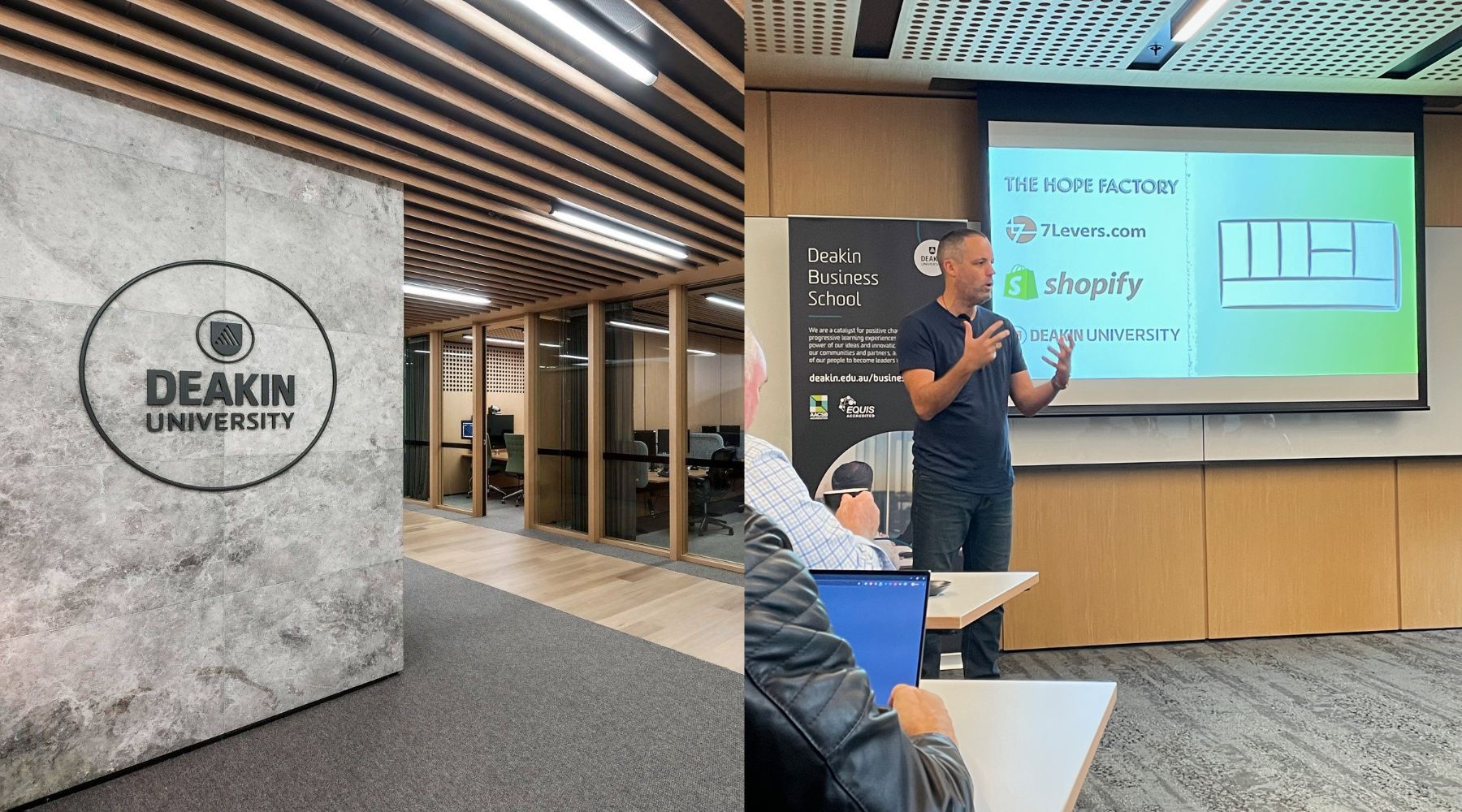
Ecommerce Strategic Planning for SMBs: Insights from The Hope Factory and Deakin University's Business Workshop
by Victoria Garcia
We recently partnered with Deakin University to co-host a business workshop focused on ecommerce strategy. It was led by Pete Williams, author of "Cadence: A Tale of Fast Business Growth" and Professor-of-Practice at Deakin Business School, along with Andrew Cox, Founder of The Hope Factory. Our goal was to equip aspiring entrepreneurs and Shopify merchants with practical strategies for boosting ecommerce growth.
The Power of Good Strategy
Feeling overwhelmed by the day-to-day demands of running your small business? You're not alone. Many small and medium-sized businesses (SMBs) find themselves bogged down in the nitty-gritty tasks of managing finances, fulfilling orders, and keeping operations afloat. But here's the kicker: most of us lack a clear roadmap for growing ecommerce profits. We're so busy putting out fires that strategic thinking often takes a back seat.
During the workshop, we delved into Richard Rumelt's 'Good Strategy / Bad Strategy' - a good way to think about Strategic Planning for SMEs and it pairs so well with the 7 Levers Framework.
For those unfamiliar with Rumelt's work, he argues that good strategy involves:
- Identifying critical challenges and opportunities.
- Developing a coherent plan of action
- Aligning resources and efforts to achieve desired outcomes.
In contrast, bad strategy lacks clarity and specificity, relying on vague goals and wishful thinking.
The Framework to Measure and Optimise
The 7 Levers Framework serves as an effective business health check, uncovering areas of strength and weakness. It breaks down the overwhelming task of 'strategy' into manageable 10% Win actions, focusing on seven key areas that drive profits. It’s about doing it consistently, measuring progress, and adjusting as you go. Each lever provides a specific area to focus on for improvement, ensuring that every effort is aligned and contributes to the overarching 10% Win action plan.
Here's a breakdown of the 7 levers and actionable ecommerce strategies:
If you're planning to launch a new online store, it's best to embed best practice features for all 7 levers from the start. If you already have a Shopify store running, the next step is to analyse each lever to get a baseline of where you stand today.
Need help with your Shopify ecommerce strategy? Let's talk.
Ps:Future events are being planned, so keep an eye out on our socials.